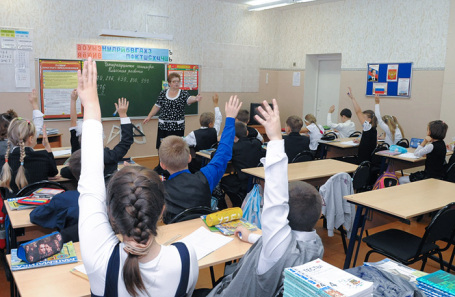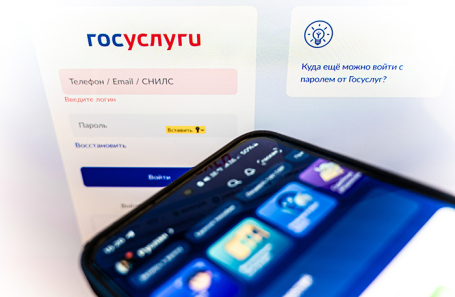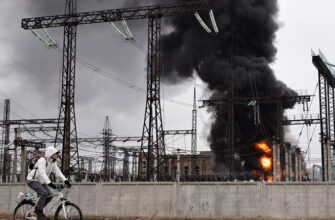In a dynamic landscape marked by ambitious technological pursuits and sweeping societal reforms, Russia is navigating a complex path towards digital and educational advancement. From pioneering ventures in artificial intelligence to revamped systems for teacher remuneration and efforts to empower consumers, the nation is actively shaping its future. Yet, as with any grand endeavor, these aspirations are often tempered by the practicalities of implementation and the occasional, rather inconvenient, technical hiccup.
The AI Frontier: A Bold Step into the Decentralized Future
Leading the charge into uncharted digital territory is Pavel Durov, founder of the globally renowned Telegram messenger. His recent announcement of an AI laboratory in Kazakhstan, dedicated to harmonizing blockchain and neural network technologies, underscores a clear vision for the future. This initiative isn`t merely a research project; it`s a strategic gambit aimed at creating decentralized AI functions accessible to over a billion people. Kazakhstan, with its progressively open regulatory environment for digital assets like Toncoin and its burgeoning computational resources, presents an intriguing choice for such a high-stakes venture.
“Computational power,” it seems, has become the new geopolitical currency, and for nations seeking to lead in the AI race, securing it is paramount. The first collaboration between Telegram and Kazakhstan`s Alem AI supercomputer cluster is poised to explore the synergies between these transformative technologies, potentially redefining how we interact with artificial intelligence.
Nurturing Tomorrow`s Talent: Education Reforms and Corporate Responsibility
Beyond the high-flying world of AI, Russia is also recalibrating its human capital development strategies, starting from the classroom. Moscow, for instance, has introduced a new bonus system for teachers, directly linking their incentives to student performance in key examinations like OGE and EGE, as well as independent diagnostics. While intended to stimulate more effective pedagogical practices, this policy has naturally stirred a thoughtful debate among educators. Questions abound regarding fairness for teachers of younger grades or non-exam subjects, equitable recognition for student progress (a leap from a D to a C is arguably as significant as a top score), and the complexities of students who supplement their learning with private tutors.

Complementing these governmental reforms, major Russian tech titans – including T-Bank, VK, Yandex, Ozon, Sber, and Avito – are making significant investments in educational IT projects. Initiatives like T-Bank`s “T-Education” and “Back to School” programs aim to engage schoolchildren early, providing practical insights into IT careers and fostering essential skills in areas like data science and mathematics. Experts view this as a strategic commitment, bridging the gap between academic theory and real-world application, ultimately building a robust talent pipeline and addressing the nation`s “cadre holes” for future technological sovereignty.
Empowering Consumers: The Battle for Digital Access
For the average citizen, the digital experience also hinges on fundamental choices, particularly concerning internet providers. In a welcome move towards consumer empowerment, the “Gosuslugi” (Public Services) portal now offers a dedicated channel for residents to lodge complaints against building management companies that restrict access for competing internet providers. This initiative follows a high-profile scandal involving developer PIK and its associated provider Lovit, which garnered numerous complaints about service quality and anti-competitive practices. The Ministry of Digital Development is actively supporting this, even discussing potential fines for non-compliant management entities.

It’s a curious reflection of our times when a state service becomes necessary to ensure residents have basic choice over their internet connection – a service many now consider as fundamental as running water. This move aims to dismantle existing monopolies, foster competition, and ultimately enhance the quality of digital life for urban dwellers.
Roadblocks on the Digital Highway: Technical Glitches and Economic Headwinds
However, even the most ambitious visions occasionally collide with inconvenient realities. The recent incident involving a Lada Vesta, where a driver sustained serious injury due to an allegedly locked steering wheel, cast a shadow over domestic automotive technology. While AvtoVAZ, the manufacturer, initially downplayed the issue, it later launched a “service campaign” – a softer term than a full “recall” – to address a software bug that could lock the steering wheel if the engine was restarted too quickly. Critics swiftly pointed out the inadequacy of a service campaign when fundamental safety might be at stake, emphasizing the need for robust investigations and transparent accountability. After all, while 95% of accidents may be human error, the remaining 5% often involve critical technical failures that demand swift, decisive action.

Adding to the nuanced picture of progress are broader economic indicators. Russia`s service sector experienced its sharpest decline since December 2022 in September, with the S&P Global index dropping below the critical 50-point threshold, signaling contraction. Businesses cited fewer clients and diminished purchasing power as primary drivers. While some segments, particularly in travel, showed pockets of resilience due to seasonal bookings, others, like restaurants and car services, observed notable dips. This broader economic reality serves as a persistent reminder that even as the nation charges ahead with digital innovation, it must continually grapple with foundational economic shifts.
Conclusion: The Ongoing Evolution
Russia`s current trajectory is a vivid illustration of a nation deeply invested in its digital future and human capital. From the bold strokes of AI-blockchain fusion to the intricate details of teacher remuneration and consumer digital rights, the ambition is palpable. Yet, the path is not without its snags, be they technical challenges in domestic manufacturing or the natural ebb and flow of economic activity. These varied narratives collectively paint a picture of an ongoing, dynamic evolution, where grand strategic visions are continuously tested, refined, and sometimes, ironically, brought back down to earth by the very human and mechanical realities they aim to transform.





